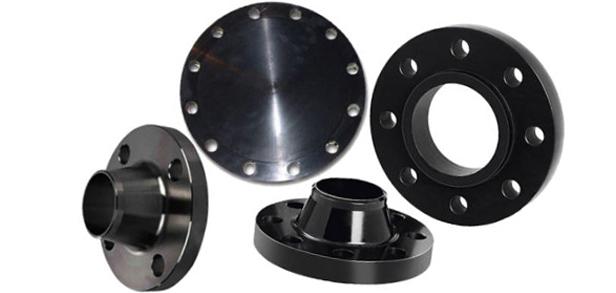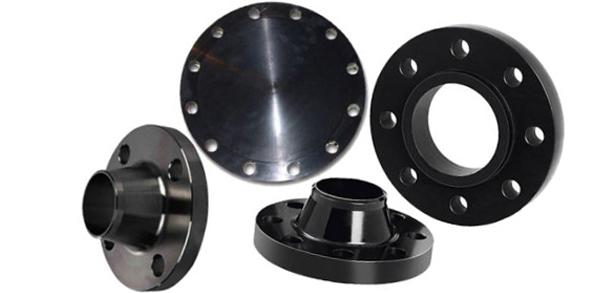In our discussion that began with an introduction to flanges, we went over some of the most fundamental aspects of these pipe fittings. These fundamentals include the facts that flanges provide additional flexibility during assembly, disassembly, and maintenance and that they connect pipe systems to a variety of pieces of equipment and components. Flanges also connect pipe systems to a variety of pieces of equipment and components. In addition, flanges are used to connect various pipe systems to a wide variety of components and pieces of equipment. These fundamentals received an in-depth discussion throughout the entirety of our introductory lesson on flanges.
-
A flange that has a lap joint is an example of the kind of flange that is frequently used in the planning and construction of piping and ducting systems
-
This is because this kind of flange allows for a more secure connection between the two halves of the flange
-
An example of this kind of flange is provided here
However, in order to ensure a safe, dependable, and cost-effective operation, it is essential to have a solid understanding of both how the component functions and how the myriad of design differences will impact performance. Without this understanding, Industry Standard Flange will be impossible to guarantee any of these things. In the absence of this comprehension, it will be impossible to provide a guarantee for any of these things. This is valid for all of the flanges as well as the other components of the piping system.
In this article, we are going to take an in-depth look at the operation of lap joint flanges, the various options that are available when purchasing a lap joint flange, as well as key considerations that should be kept in mind when purchasing one of these flanges. In addition, we are going to discuss the various options that are available when purchasing a lap joint flange. In addition to this, we are going to talk about the various choices that can be made when purchasing a lap joint flange and their associated options. In addition to this, we are going to discuss the numerous options that are available to choose from when purchasing a lap joint flange and the choices that are associated with those options.
WHEN FLANGING A LAP JOINT, WHAT ACTUAL STEPS ARE INVOLVED IN THE PROCESS?
Flanges that are joined together with a lap are referred to by a number of different names depending on the context. You'll find listed below some of these people's names.
Back Up flanges
Loose Ring flanges
Loose Hubbed flanges
Van Stone flanges
They are a two-piece flange that consists of a Lap Joint Stub End that is butt welded to the pipe and a backing lap joint flange that is slid onto the pipe prior to welding the Stub End. The pipe is butt welded to the Lap Joint Stub End. Before anything else, the pipe is butt-welded to the Lap Joint Stub End. The pipe is first butt-welded onto the Lap Joint Stub End before anything else is done. Before anything else can be done, the pipe is first butt-welded onto the Lap Joint Stub End.
Flanges that have a lap joint and flanges that have a slip on joint have a great deal of similarities and characteristics in common with one another and share a lot of the same qualities.
On the other hand, flanges with a lap joint have a radius at the point where the flange face and the bore meet. This is called the lap joint radius. This is done so that the flanged portion of the flange can accommodate the flanged portion of the Lap Joint Stub End. This is done so that the flanged portion of the flange can accommodate the flanged portion of the Lap Joint Stub End. Due to this, you can only use these flanges with stub ends that have a lap joint on them because they are designed specifically for that application. In other words, you cannot use them with any other type of stub end.
It is possible for the materials that are used in the lap joint flanges and the lap joint stub ends to vary. In fact, it is even possible for these materials to vary even within a single implementation of the design. Because of this, there is the potential for a greater degree of cost flexibility to be achieved.
LapFlanges are typically manufactured using a wide variety of steels and steel alloys. These steels and alloys can include carbon steel, stainless steel, and a wide variety of other types of alloys. LapFlanges are used in joints.
Because these flanges can be purchased in the same dimensions as other types of flanges, it is simple to install them in piping systems that are already in place or to use them in conjunction with other components of the piping system. This is because other types of flanges can be purchased in the same dimensions. This is due to the fact that these dimensions are also available for purchase in other types of flanges.

Stub Ends are also designed to match the material and wall schedule of the pipe they are attached to, which helps to maintain the inside and outside diameters of the piping process. This is accomplished by matching the material of the Stub End to the pipe's wall schedule. This is achieved by making sure that the material of the Stub End is compatible with the wall schedule of the pipe. To accomplish this, it is necessary to check that the material used in the Stub End is compatible with the wall schedule of the pipe. In engineered piping systems, which are typically required to adhere to stringent requirements regarding the wall thickness of the pipes, this design is typically used. In addition, engineered piping systems are typically required to adhere to specific requirements regarding the pipe diameter. Typically, it is required of these systems that they meet a certain set of specifications.
Stub Ends can also be purchased in a variety of lengths, including MSS lengths, also known as Short lengths, and ASA lengths, also known as Long lengths. Both of these lengths are referred to as Short lengths and Long lengths, respectively. These lengths are referred to as Short lengths and Long lengths, respectively. Long lengths are the longer of the two. In addition, the face finishes that are offered for these ends come in a wide variety, so you can choose the one that best suits your needs from the options available to you. The appropriate one can be chosen from among these finishes.
For example, finishes like serrated or phonograph can help increase the ability of the gasket to adhere to its surface, which can help prevent leaks. Other possible finishes include sandblasted and brushed. Sandblasting and brushing are two additional types of finishes that can be used.
HOW DO LAP JOINT FLANGES DIFFER FROM ROLLED ANGLE RINGS?
Rolled Angle Rings, which are also known as Vanstone Rings or Vanstone Rolled Angle Rings, offer benefits that are comparable to those that are provided by Lap Joint Stub Ends and have designs and installation requirements that are comparable to those that are provided by Lap Joint Stub Ends as well. Rolled Angle Rings are also known as Vanstone Rings. Rolling Angle Rings, or Vanstone Rings, are another name for Rolled Angle Rings.
On the other hand, there are a number of significant distinctions between the two that, in the overwhelming majority of instances, point to the fact that one of the alternatives is preferable to the other. Due to the aforementioned differences, it is clear that one of the options is superior to the other. Rolled Angle Rings are not considered to be registered fittings, which is a significant fact that needs to be kept in mind at all times. This is a very vital piece of information that needs to be known.
The rolled angle ring and the backing flange can both be fabricated from materials that are distinct from one another because of the two-part design, which is analogous to the design of lap joint flanges. This design is comparable to the design of lap joint flanges. Because of this, there is the possibility of increased flexibility, in addition to the possibility of cost optimization. This component of the design is analogous to that of flanges that have connections made using lap joints. An example of this idea is depicted in the form of a backing flange that is made of carbon steel that has been galvanized and a rolled angle ring that is made of 316/L stainless steel. Both components are joined together. The combination of these two kinds of material is yet another illustration of this idea.
In addition to this, the backing flange can freely rotate on the pipe, making it much simpler to correctly align everything else. This is one of the many advantages of this design.
